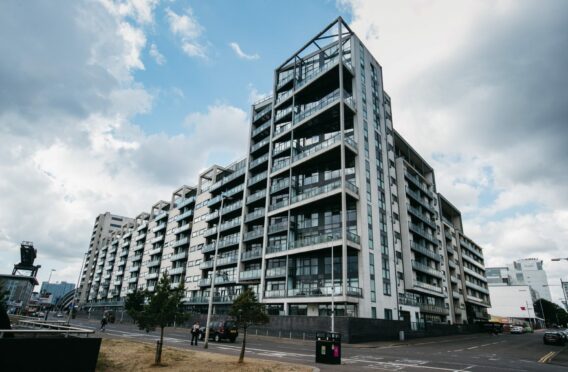
Campaigners have questioned slow progress in Scotland to make developers responsible for fire safety repairs after the UK Government said last week building firms had yet to sign up for a similar scheme in England.
On Tuesday, Housing Secretary Michael Gove revealed 11 companies had not signed a “self-remediation” contract to fix housing blocks with potentially dangerous cladding.
The move came six years after the Grenfell Tower tragedy when 72 people died when flames tore up the London tower block.
Gove threatened to stop any developers that failed to sign from being able to start new work in England or receive building control approval for work under way.
Two of the firms named, Dandara and Avant Homes, have a presence in Scotland but it is understood both intend to sign the safety pledge next week.
Last May, the Scottish Government announced it would work with developers’ umbrella body Homes for Scotland to introduce a similar scheme here. However, the Fire Brigades Union (FBU) and campaigners have criticised the time it is taking to finalise this.
John McKenzie, secretary of the FBU in Scotland, said: “It is appalling that so many years after Grenfell, residents in flats with cladding are still waiting for progress.
“However, last week’s announcement by the UK Government that developers will be funding remedial work is a step forward. We now urgently need to see the same for Scottish homeowners.”
Chris Ashurst from the High Rise Scotland Action Group, said: “Slow progress here has been frustrating.”
Abhijeet Kadwe owns a flat in a Finnieston, Glasgow, at an apartment block covered in cladding like that used on the Grenfell Tower.
He said: “Compared to action in England, it has been mostly radio silence here on this issue. Scottish ministers have to stop dragging their heels.”
Last June, The Sunday Post revealed the cost of identifying and removing dangerous cladding from homes across Scotland is expected to reach £1 billion.
Holyrood has so far received £97 million from the UK Government to deal with the crisis, with a further £300m expected. Developers are also expected to share the rising costs of identifying and replacing dangerous cladding.
The Scottish Government insisted it would ensure buildings with potentially unsafe cladding are remediated and that developers would have to step up and meet their responsibilities, or they would face consequences.
It said: “Our focus has been on negotiating an accord to get that commitment from developers through a voluntary agreement.
“We are clear, if we need to then we will legislate to safeguard residents and homeowners.”
Homes for Scotland said residents should not be responsible for the cost of any life-critical fire safety mitigation, adding: “We continue to work with officials to find a solution that is fair and equitable in reflecting the responsibilities of all parties in the design, construction and inspection of buildings.”

Enjoy the convenience of having The Sunday Post delivered as a digital ePaper straight to your smartphone, tablet or computer.
Subscribe for only £5.49 a month and enjoy all the benefits of the printed paper as a digital replica.
Subscribe